Stílfært og sett í samhengi: um heimildargildi vitnisburða í réttarheimildum.
Ártal:
Bls:
DOI:
Efnisorð:
Í greininni er fjallað um heimildargildi vitnisburða fyrir dómi líkt og þeir eru skráðir í bækur sýslumanna. Nokkur helstu fræðilegu álitamál þeim aðlútandi eru tekin fyrir og rædd í samhengi við kennilega umræðu um frásagnir, textagreiningu, minni og sögulegt samhengi. Rætt er um tilurð og helstu einkenni texta dómabóka og höfund/a hans, muninn á staðreyndum og samhengi, vandkvæði minninga og upprifjana á þeim og þá frásagnartækni sem sakborningar og vitni beita fyrir dómi. Þá er meðhöndlun sagnfræðingsins Eggerts Þórs Bernharðssonar og bókmenntafræðingsins Helgu Kress á vitnisburðum sakborninga í Natansmálum í nýlegum greinum í Sögu tekin sem dæmi um nokkur vandkvæði heimildaflokksins og þær ógöngur sem fræðimenn geta ratað í sé ekki tekið tillit til þeirra.
Narrative and Context in the (De-)Construction of Court Testimony
The records of Icelandic county courts offer historians vast but largely untapped source material. The National Archives contain over 700 volumes of interrogations, sentences and other judicial documentation dating from the early 17th to 20th centuries. Besides information about details of everyday life, these sources supply testimonies of numerous people found nowhere else in historical sources, providing a veritable gold mine for research into the lives of "ordinary people". A National Archives project which is cataloguing the contents of these judicial volumes and building a searchable online database will probably soon heighten the interest in studying such records.
This development calls for a theoretical discussion of court testimony as a historical source, since its contents cannot always be taken at face value. Thus this article discusses some of the epistemological and methodological issues in analysing such testimonies, including how interrogations were carried out in the late 18th and 19th centuries; who can be deemed the author of the text; how fact and context are related in historical analysis; how events and experiences are narrated in court settings or in the creation of autobiographical memories; and, consequently, what "truth value" court testimonies may possess. Finally, this theoretical treatment is applied to two recent Icelandic analyses of testimonies of the accused in the early 19th-century murder of Natan Ketilsson, which became a famous case concluding in 1830 with Iceland's last public execution. Both analyses are found to lack methodological and analytical nuances, as well as regard for limitations inherent in the sources and subsequent interpretations.
The main argument of the article is that any analysis of court testimonies must take into account the creative process of constructing them, including the discourse and dramatic performance involved in trial proceedings. Other factors to be taken into account are the pre- and re-construction of narratives as well as the communicative intent of their authors, the intentions of the scholar reading and analysing the material and, finally, the contextualisation of each testimony or court case.

